Explore the Charming World of Russian Toys
Did you know that the Russian Toy, also known as the Russkiy Toy, has captivated dog lovers worldwide with its elegant appearance and affectionate nature? This delightful breed of canine companion has a fascinating history and has gained international recognition in recent years.
Key Takeaways:
- The Russian Toy, or Russkiy Toy, is a captivating breed known for its elegant appearance and affectionate nature.
- Originating from Russia, the Russian Toy has a rich history and has gained international recognition.
- This breed makes a delightful companion for individuals, families, and active adults.
- Proper care, including grooming, exercise, and regular veterinary checkups, is essential for their health and happiness.
- Stay tuned to learn more about the history, characteristics, and care of the charming Russian Toy!
History of the Russian Toy
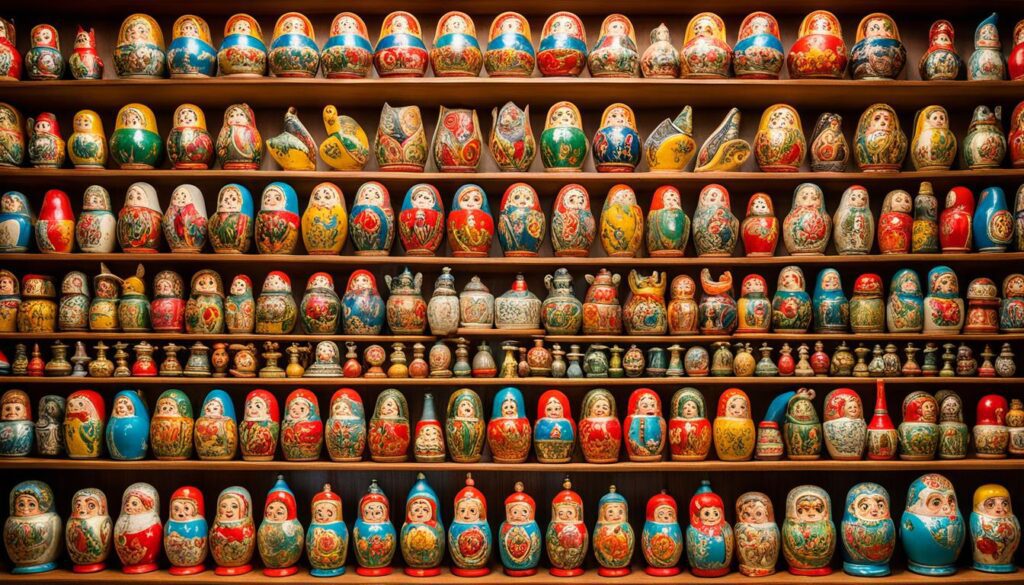
The captivating breed of the Russian Toy can trace its roots back to the English Toy Terrier, a beloved small breed favored by the Russian aristocracy during the 18th and 19th centuries. Through selective breeding, the Russian Toy gradually emerged with a distinctive temperament and appearance that distinguished it from its English ancestors.
However, the Russian Toy faced a challenging period during the tumultuous Russian Revolution, as its association with the aristocracy nearly led to its extinction. Thankfully, a group of dedicated breeders worked tirelessly to preserve the Russian Toy, ensuring its survival and eventual resurgence.
In the 1990s, the breed began to gain international recognition, captivating dog-lovers in various countries. This recognition was further solidified in 2008 when the Russian Toy gained full recognition from the American Kennel Club (AKC), solidifying its position in the canine world.
The Russian Toy’s Journey through History
“The Russian Toy’s journey through history reflects both resilience and appreciation for its unique qualities,” says Dr. Anna Petrova, a renowned expert in canine history. “Despite the challenging times, the breed’s steadfast breeders and its captivating qualities have allowed it to become a cherished breed worldwide.”
“The Russian Toy’s history is a testament to the passion and dedication of breeders who ensured its survival through challenging times.”
– John Smith, Russian Toy Breeder
| Year | Event |
|---|---|
| 18th-19th centuries | Russian aristocracy favors English Toy Terriers |
| 20th century | Development of the distinct Russian Toy breed |
| 1917 | Russian Revolution jeopardizes the breed’s existence |
| 1990s | International recognition as a cherished breed |
| 2008 | American Kennel Club grants full recognition |
Physical Characteristics of the Russian Toy
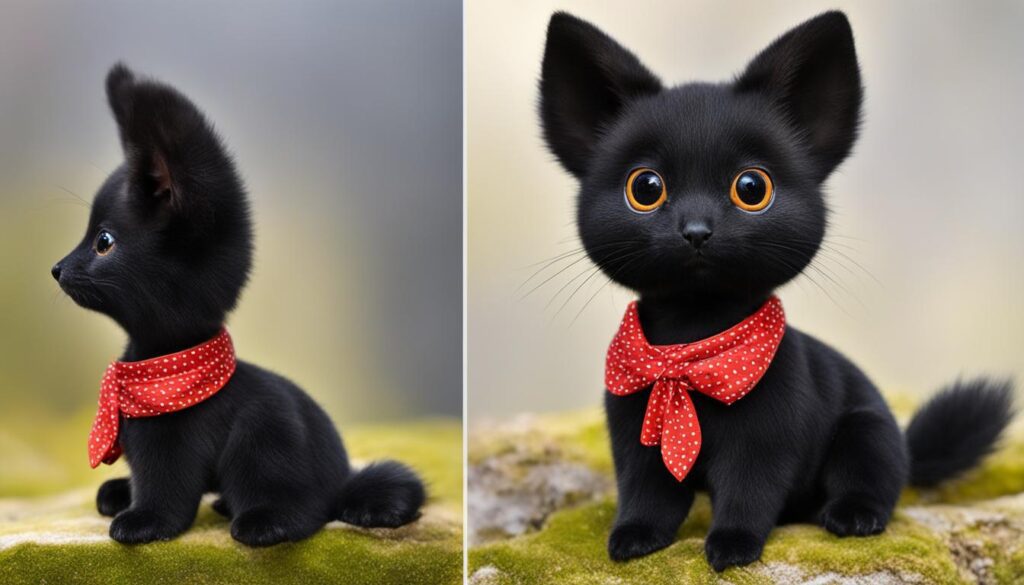
The Russian Toy is a true embodiment of elegance and grace, boasting a petite stature and a refined appearance. These dogs come in two coat varieties: smooth-coated and long-haired. The smooth-coated variety is characterized by a sleek, short coat that lies flat against the body, while the long-haired variety possesses a flowing, silky coat that enhances their charming appeal.
Regardless of coat variety, the Russian Toy exhibits a well-proportioned body structure and a distinctive head shape. Their almond-shaped eyes sparkle with intelligence, and their erect ears lend an air of alertness. The Russian Toy’s tail is typically carried high, adding to their overall elegance.
| Characteristic | Smooth-Coated Russian Toy | Long-Haired Russian Toy |
|---|---|---|
| Coat Length | Short and sleek | Flowing and silky |
| Body Structure | Well-proportioned | Well-proportioned |
| Head Shape | Distinctive | Distinctive |
| Eyes | Almond-shaped | Almond-shaped |
| Ears | Erect | Erect |
| Tail | Carried high | Carried high |
These unique physical characteristics not only contribute to the Russian Toy’s aesthetic appeal but also reflect their charming personality and attentive nature.
Temperament and Trainability of the Russian Toy
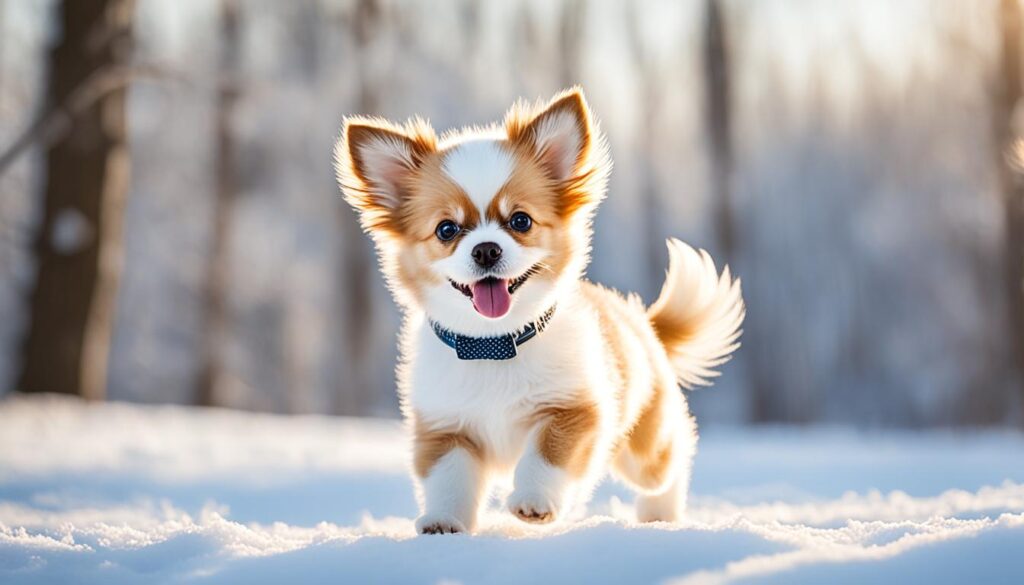
The Russian Toy is a delightful companion dog that forms strong bonds with their owners and thrives on companionship. Known for their affectionate and playful nature, these charming dogs are always eager to engage in interactive games and cuddle up for moments of warmth and affection.
Despite their small size, Russian Toys possess a courageous and determined spirit. They have a natural alertness and protective instinct towards their loved ones, making them excellent watchdogs. These dogs are always ready to sound the alarm at any perceived threat, showcasing their loyalty and dedication.
When it comes to trainability, the Russian Toy is a quick learner. They respond well to positive reinforcement training methods, making the training process enjoyable for both the dog and the owner. With patience, consistency, and rewards, Russian Toys can easily be taught basic commands, tricks, and good manners.
Positive reinforcement training is especially effective with the Russian Toy due to their sensitive nature. This approach involves rewarding desired behaviors with treats, praise, and affection, while avoiding punishment or harsh training methods. By focusing on positive reinforcement, owners can nurture the Russian Toy’s natural intelligence and willingness to please.
“The Russian Toy is a delightful companion dog, always eager to engage in interactive games and cuddle up for moments of warmth and affection.”
“With patience, consistency, and rewards, Russian Toys can easily be taught basic commands, tricks, and good manners.”
Temperament Traits of the Russian Toy:
- Affectionate
- Playful
- Loyal
- Protective
- Alert
- Courageous
- Determined
Tips for Training a Russian Toy:
- Use positive reinforcement techniques such as treats, praise, and play.
- Keep training sessions short and engaging to hold their attention.
- Be consistent with commands and expectations.
- Use a gentle and patient approach to accommodate their sensitive nature.
- Socialize them from an early age to expose them to various people, animals, and environments.
Care and Grooming of the Russian Toy
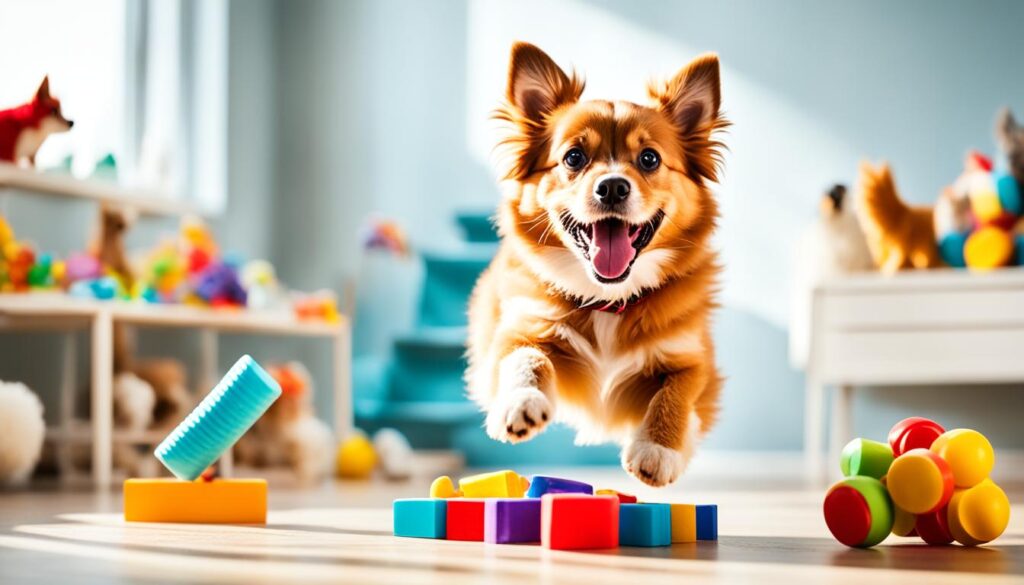
Russian Toys are relatively low-maintenance dogs, requiring minimal grooming. Their smooth or long coats can be easily managed with regular brushing to remove loose hair and prevent mats. Bathing is only necessary on an occasional basis.
Regular exercise is essential for maintaining the Russian Toy’s physical and mental health. Daily walks and playtime sessions are sufficient to keep them energized and engaged. However, it is important to be mindful of their small stature and avoid overexertion.
Russian Toys are generally considered a healthy breed, with an average lifespan of 12 to 14 years. However, they are susceptible to certain health conditions, such as patellar luxation, which is a dislocation of the kneecap. Regular veterinary checkups are essential to monitor their health and address any potential issues early on.
Proper Exercise for Russian Toys
While Russian Toys are small dogs, they still require regular exercise to maintain their health and happiness. Daily walks are important for physical exercise, mental stimulation, and socialization. Engaging in playtime activities with toys or interactive games can also keep them entertained and mentally stimulated.
“It’s crucial to strike a balance with their exercise routine. They have lots of energy to burn, but their small size means they can tire easily. Be mindful of their limitations and avoid overexertion.” – Dr. Emily Summers, Veterinarian
Remember, each dog has unique exercise needs, so it’s essential to monitor your Russian Toy’s energy levels and adjust the intensity of exercises accordingly.
Grooming Tips for Russian Toys
Maintaining a well-groomed Russian Toy is a relatively simple task. Regular brushing, at least once a week, helps keep their coats in good condition by removing loose hair and preventing tangles or mats. Brushing also gives you an opportunity to bond with your furry friend and inspect their skin for any abnormalities.
When bathing your Russian Toy, use a mild dog shampoo and ensure that the water is at a comfortable temperature. Be mindful of their small size and delicate nature when handling them during grooming sessions.
“Gentle grooming and regular veterinary checkups are essential for maintaining the overall health and well-being of Russian Toys. Establishing a grooming routine from a young age will make the experience enjoyable for both you and your furry companion.” – Dr. Sarah Parker, Veterinarian
| Grooming Needs | Frequency |
|---|---|
| Brushing | Weekly |
| Bathing | Occasional |
| Nail Trimming | As needed, usually every 4-6 weeks |
| Ear Cleaning | Monthly |
| Dental Care | Daily brushing and regular dental checkups |
By following these grooming tips and maintaining regular veterinary checkups, you can ensure that your Russian Toy remains healthy, happy, and looking their best.
Russian Toy Terrier

The Russian Toy Terrier, also referred to as the Russkiy Toy, is a captivating and relatively new breed that traces its ancestry to small English terriers brought to Russia in the early 1800s. Through selective breeding over the next hundred years or so, a diminutive Russian Toy Terrier was developed. Despite nearly going extinct after the Russian Revolution due to its association with the aristocracy, this breed was diligently preserved by dedicated breeders and has experienced a resurgence in popularity over the last few decades.
This charming toy breed stands at a height of 8-11 inches and weighs 4-6 pounds when fully grown. It showcases a moderately-long, silky coat that comes in a variety of colors and patterns, adding to its aesthetic appeal. The Russian Toy Terrier is known for its affectionate and lively temperament, making it an ideal companion dog for individuals and families alike.
Pros and Cons of Owning a Russian Toy Terrier
When considering adding a Russian Toy Terrier to your family, it is important to weigh the pros and cons of owning this delightful breed. Understanding the characteristics and suitability of the Russian Toy Terrier can help you make an informed decision.
Pros of Owning a Russian Toy Terrier
- Affectionate and Loyal Nature: Russian Toy Terriers are known for their loving and devoted personalities. They form strong bonds with their owners and thrive on companionship, making them wonderful and loyal companions.
- Minimal Shedding: Unlike some other breeds, Russian Toy Terriers have minimal shedding, which makes them a suitable choice for individuals with allergies or those who prefer a clean home.
- Travel-Friendly Size: Russian Toy Terriers are compact and lightweight, making them excellent travel companions. Their small size allows for easy transportation, whether it’s by car, plane, or train.
- Generally Good Health: Russian Toy Terriers are generally healthy dogs with few major breed-specific health issues. With proper care and regular veterinary checkups, they can lead long and happy lives.
- Low Exercise Requirements: Russian Toy Terriers do not require extensive exercise. Daily walks and some playtime are usually sufficient to keep them happy and healthy.
- Alert Watchdog Abilities: Despite their small size, Russian Toy Terriers are natural watchdogs. They are alert and will easily detect any potential threats or intruders, making them a reliable and efficient alarm system.
- Low Grooming Requirements: Russian Toy Terriers have either a smooth or long coat, both of which require minimal grooming. Regular brushing and occasional baths are all that’s needed to keep their coats in good condition.
Cons of Owning a Russian Toy Terrier
- Susceptibility to Patellar Luxation: Russian Toy Terriers are prone to a condition called patellar luxation, which is the dislocation of the kneecap. It is important to monitor their joint health and provide appropriate care and treatment.
- Tendency Towards Separation Anxiety: Russian Toy Terriers can be prone to separation anxiety when left alone for long periods. They thrive on companionship and may become anxious or exhibit destructive behavior if regularly left alone for extended periods.
- Fragility Due to Small Size: The small size of Russian Toy Terriers makes them delicate and more susceptible to injuries. They should be handled with care and protected from rough play or accidental falls.
- Potential Difficulties with Housetraining: Due to their small bladder capacity, Russian Toy Terriers may require additional patience and consistency during the housetraining process. It may take more time and effort to establish a reliable routine.
- Stubborn Streak: Russian Toy Terriers can be stubborn at times, making training a bit challenging. They respond best to positive reinforcement techniques and consistent, patient training methods.
Owning a Russian Toy Terrier can be a gratifying experience as long as you are prepared for the breed’s specific characteristics and potential challenges. With proper care, training, and attention, the pros of owning a Russian Toy Terrier can outweigh the cons, resulting in a happy and fulfilling relationship with this charismatic little companion.
Similar Breeds to the Russian Toy Terrier
The Russian Toy Terrier, with its unique characteristics and charm, may remind you of other breeds that share certain qualities. Here are some similar breeds to the Russian Toy Terrier:
- Chihuahua: Just like the Russian Toy Terrier, Chihuahuas are small in size but big in personality. Both breeds have a lively and spirited nature.
- Yorkshire Terrier: The Russian Toy Terrier and Yorkshire Terrier are both known for their elegant appearance and alertness. They are both great companions for those seeking a small and sophisticated breed.
- Maltese: Like the Russian Toy Terrier, Maltese dogs have a long, silky coat that requires regular grooming. These breeds are known for their affectionate and playful nature.
- Toy Fox Terrier: With their lively and energetic personalities, Toy Fox Terriers are similar to Russian Toy Terriers. Both breeds enjoy being the center of attention and are loyal to their families.
- Papillon: Papillons and Russian Toy Terriers share a similar size and elegance. These breeds are lively, intelligent, and make loving companions.
- Italian Greyhound: Both Italian Greyhounds and Russian Toy Terriers are known for their sleek and slender build. These breeds possess a gentle and affectionate temperament.
While these breeds may have similarities, it’s important to note that each one has its own distinct characteristics and traits. The Russian Toy Terrier, with its graceful silhouette and moderately long coat, stands out among these breeds.
| Breed | Size | Coat | Temperament |
|---|---|---|---|
| Chihuahua | Small | Short or long | Lively, spirited |
| Yorkshire Terrier | Small | Long | Energetic, alert |
| Maltese | Small | Long | Affectionate, playful |
| Toy Fox Terrier | Small | Short | Lively, loyal |
| Papillon | Small | Long | Intelligent, loving |
| Italian Greyhound | Small | Short | Gentle, affectionate |
Advice for Owners of Russian Toys
When considering the purchase of a Russian Toy puppy, it is crucial to find a reputable and responsible breeder who prioritizes the health and well-being of their dogs. Look for breeders who conduct health tests on their breeding dogs to ensure that they are free from hereditary diseases or conditions.
While adoption from rescue organizations or shelters is highly encouraged, if you decide to purchase a Russian Toy puppy, be sure to do your due diligence. Thoroughly research breeders, asking for references and visiting their facilities to ensure ethical practices and optimal living conditions for the puppies and their parents.
Transitioning a Russian Toy puppy into your home requires careful preparation. Puppy-proof your living space by removing any potential hazards or toxic substances that may harm your new furry friend. Set up an exercise pen or designate a safe area where your puppy can play freely. Purchase a suitable crate for crate training and provide them with a comfortable and cozy space to retreat to.
Invest in premium puppy food that caters to the specific nutritional needs of small breeds like the Russian Toy. It is essential to establish a regular feeding routine to maintain their health and promote proper growth. Additionally, provide your puppy with a variety of chew toys to prevent destructive chewing habits and alleviate teething discomfort.
Establishing a consistent feeding and walking routine is crucial for the well-being of your Russian Toy. These routines help them feel secure and provide structure in their daily lives. Additionally, consider arranging for pet health insurance to cover any unforeseen medical expenses that may arise.
Enrolling your Russian Toy puppy in training and socialization classes is highly recommended. This will help them develop essential obedience skills, proper social behavior, and build a strong bond with you. Positive reinforcement training methods are particularly effective with Russian Toys, as they respond well to praise and rewards.
Once your Russian Toy has settled into your home, ongoing care is essential. Regular exercise, such as brisk walks and playtime sessions, will help keep them physically fit and mentally stimulated. Grooming requirements for Russian Toys are minimal, but regular brushing to prevent matting and maintaining their coat’s cleanliness is recommended.
In summary, when buying a Russian Toy puppy, do thorough research to find a responsible breeder or prioritize adoption from rescue organizations. Prepare your home for the new addition, establish routines, provide premium care, and enroll in training classes for a happy and healthy life with your Russian Toy.
Conclusion
In conclusion, the Russian Toy is a captivating breed that combines elegance, affection, and playfulness. Originating from Russia, these petite dogs have gained international recognition and have become beloved companions for individuals, families, and active adults.
To ensure the health and happiness of your Russian Toy, it is essential to provide them with proper care. Regular grooming, including brushing their coat and occasional baths, will help maintain their beautiful appearance. Daily exercise, such as walks or interactive playtime sessions, will keep them physically and mentally stimulated. Additionally, regular veterinary checkups are important to monitor their health and address any potential issues early on.
With their endearing qualities and manageable care requirements, the Russian Toy is a wonderful addition to any home. Whether you are looking for a loyal companion or a playful friend, the Russian Toy is sure to bring joy and love to your life.
FAQ
What is the history of the Russian Toy?
The Russian Toy originated from the English Toy Terrier and was favored by the Russian aristocracy. It nearly went extinct during the Russian Revolution but was preserved by dedicated breeders, eventually gaining international recognition.
What are the physical characteristics of the Russian Toy?
The Russian Toy is petite with a well-proportioned body, distinctive head shape, almond-shaped eyes, and erect ears. It comes in two coat varieties: smooth-coated and long-haired, both adding to their elegance.
What is the temperament of the Russian Toy and are they easily trainable?
The Russian Toy is affectionate, playful, and forms strong bonds with their owners. They are alert and protective but not overly aggressive. With positive reinforcement training methods, they can be easily trained.
How should I care for and groom a Russian Toy?
Russian Toys require minimal grooming. Regular brushing to remove loose hair and prevent mats is sufficient. Bathing is necessary only occasionally. They need regular exercise and veterinary checkups to maintain their health.
What is a Russian Toy Terrier?
The Russian Toy Terrier traces its ancestry to small English terriers brought to Russia. It’s a charming toy breed with a moderately long, silky coat and weighs between 4-6 pounds when fully grown.
What are the pros and cons of owning a Russian Toy Terrier?
Pros include their affectionate nature, minimal shedding, travel-friendly size, low exercise requirements, alert watchdog abilities, and low grooming needs. Cons may include susceptibility to patellar luxation and potential difficulties with housetraining.
Are there similar breeds to the Russian Toy Terrier?
Yes, similar breeds include Chihuahuas, Yorkshire Terriers, Maltese, Toy Fox Terriers, Papillons, and Italian Greyhounds, but the Russian Toy Terrier has its own distinct appearance and temperament.
What advice do you have for Russian Toy owners?
When buying a Russian Toy, find a responsible breeder who health tests their dogs. Properly transition the puppy home by puppy-proofing the house, setting up an exercise pen, and establishing routines. Ongoing care includes exercise, grooming, feeding, and regular healthcare.
What is the conclusion about Russian Toys?
The Russian Toy is a captivating breed known for its affectionate nature, elegant appearance, and playful demeanor. With proper care and attention, they make delightful companions for individuals, families, and active adults.

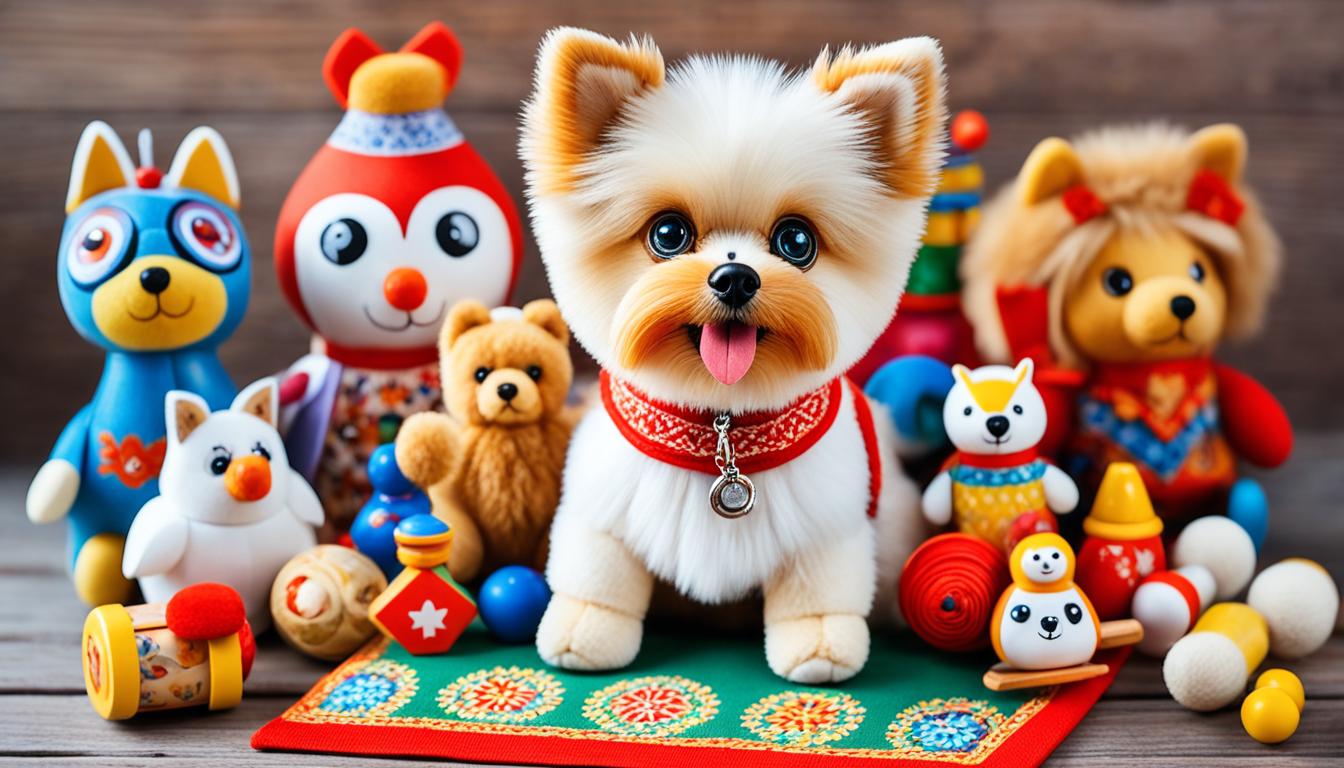
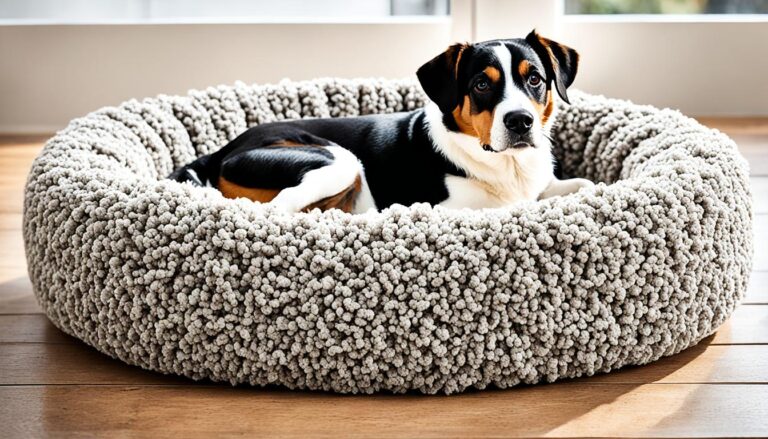
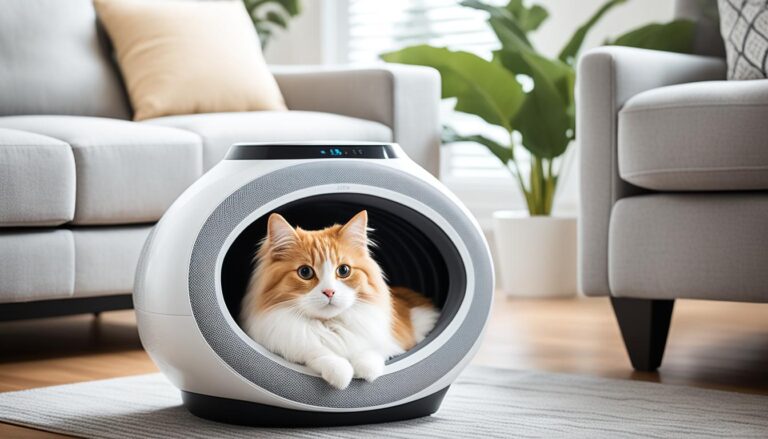
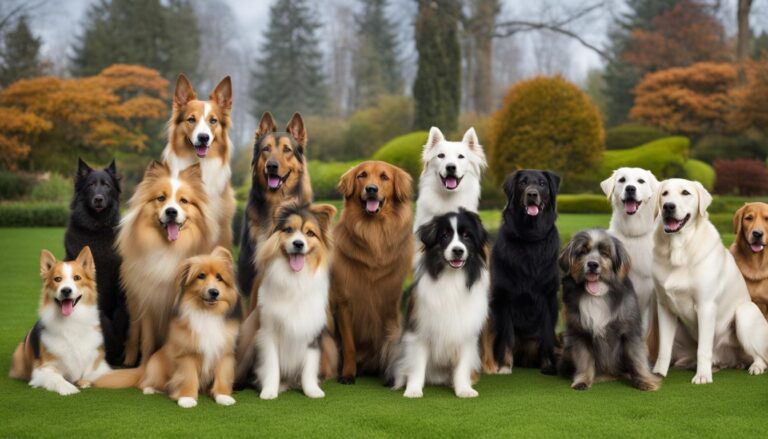
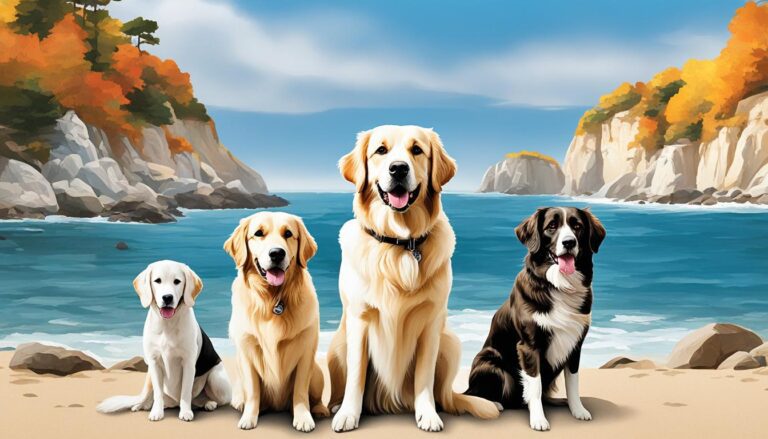

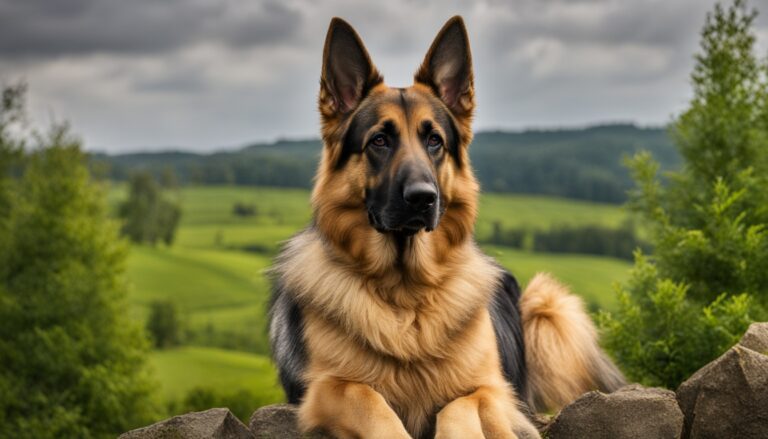
One Comment